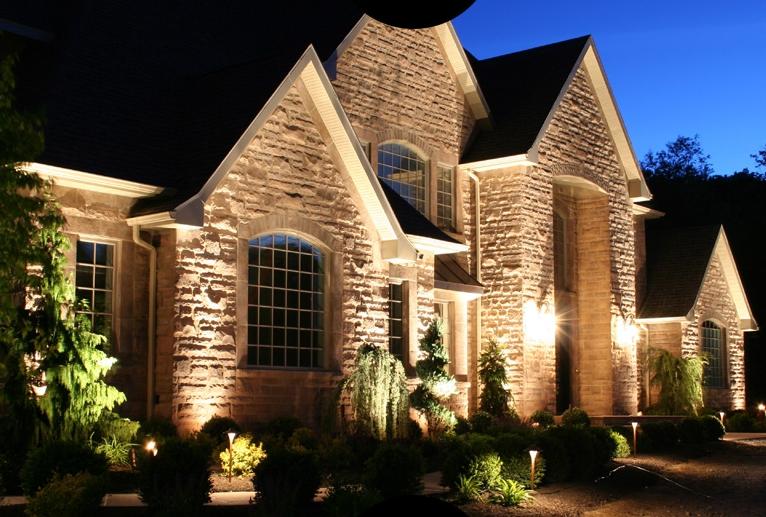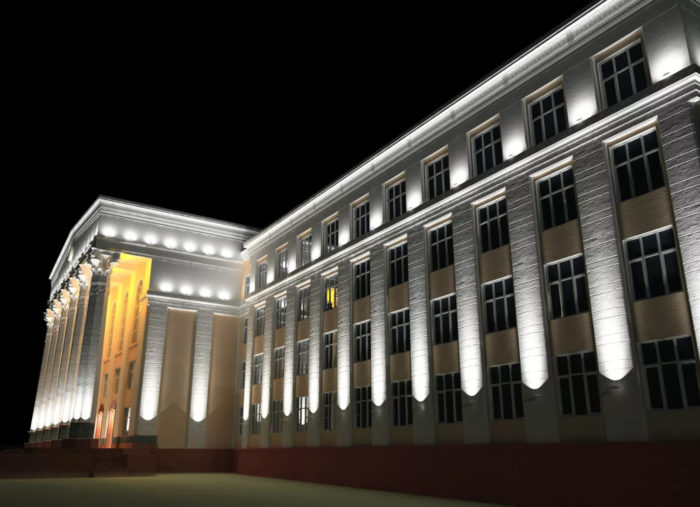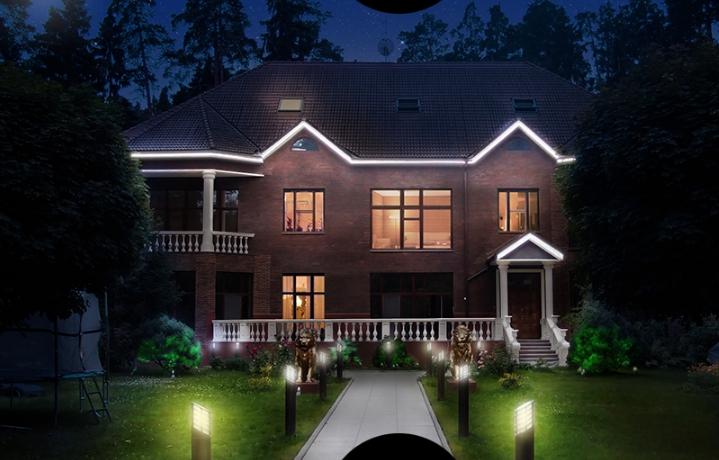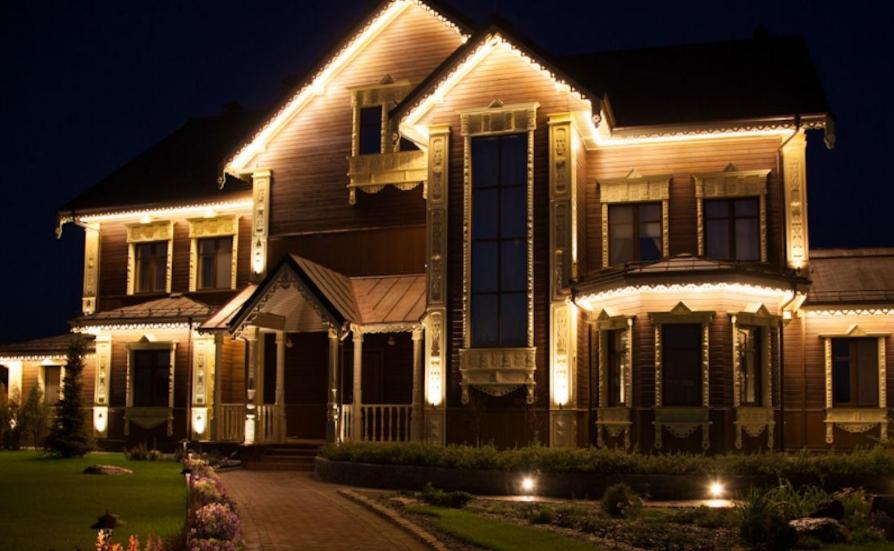Features of architectural and artistic building illumination
Architectural and artistic facade illumination allows the house to stand out from the crowd and ensures its unusual appearance at night. But to get the best effect, you need to match the lighting to the features of the building and its location.
What is used for
Backlighting performs several functions, so when choosing a specific solution, you need to clearly understand what effect is required. The main features are as follows:
- The appearance of the building is improved, it stands out among others. You can make the house expressive, even if during the day it looks not so good. Colors can be easily changed, which allows you to achieve different decorative effects, and it does not require painting the structure or remodeling it.Through the lighting, you can make the facade bright and eye-catching.
- Through the lighting, the features of the structure stand out, you can accentuate the advantages and hide the disadvantages. It creates a unique image of the building that will be remembered and can make the house stand out, even if it is among similar houses.
- Building lighting has not only a decorative function, but also serves a practical purpose. Visibility on the property is improved and visitors can walk to the porch. Lighting serves as an element of protection against intruders, as they prefer not to enter areas that are clearly visible.
Different types of lighting can be combined depending on the time of day and purpose of use.
Types of façade lighting
There are several options, each of which has features and gives a unique effect. When choosing, it is necessary to take into account the purpose of illumination of the structure and assess the complexity of the implementation of the system.
Contour lighting
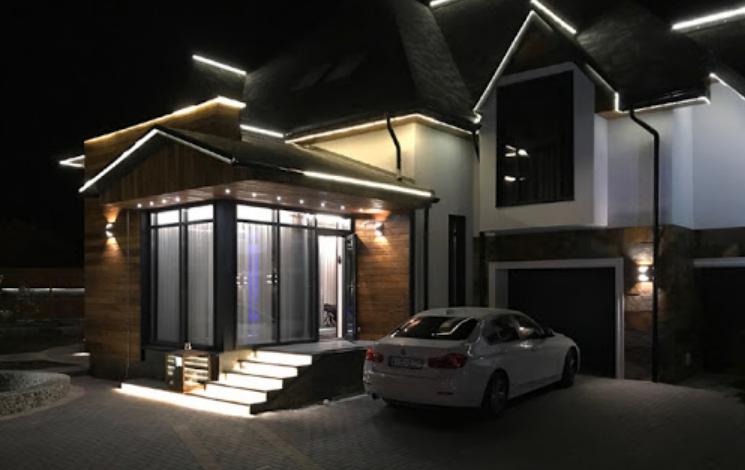
The simplest solution, allows you to highlight the outlines of the building due to the clear lines that repeat the silhouette and highlight architectural features. It is not difficult to fix the elements of light, they usually last a long time, so you can use the result for many years.
Use LED strip or a flexible neon tube. It is more convenient to buy the first option, it must be in a weatherproof version - in a silicone shell, which protects the diodes from all adverse effects. Due to this, the contour lighting serves for a long time.
Dynamic lighting
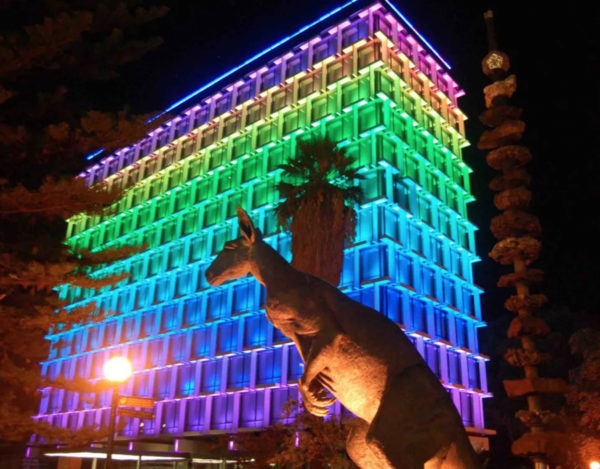
A modern option that allows you to achieve any effect on the facade, including the display of images or even video. Most often used simple solutions, they can vary the color, changing the appearance of the building and giving it different effects.
LED equipment is used, which changes the colors and their brightness. These can be both full floodlights and special fixtures that have the ability to adjust luminous flux.
Floodlighting
This option allows the building to stand out against the general background by evenly illuminating the entire façade. The house stands out among the plants and neighboring buildings, so the facade must be perfect, without flaws and imperfections.
For lighting, the following are used projectors and directional lights, located on poles or the ground and installed at a distance from the house. They have one disadvantage - they illuminate not only the facade, but also the rooms inside, so resting in them can be uncomfortable.
To protect the rooms from the light, you can put thick curtains or blinds.
Light fronts.
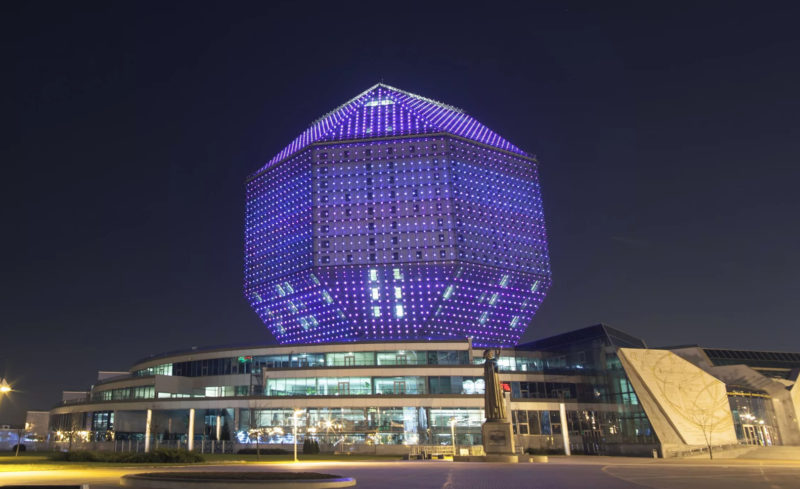
This option is only suitable for buildings with fully glazed facades. Backlighting is put behind glass, so it shines from the inside out and so can achieve different effects. It is used on business centers and other similar structures.
Because the lights are put behind glass, they last a lot longer. When choosing, you should give preference to options with diffused light, which will not blind people or create discomfort for the eyes.
Background fill
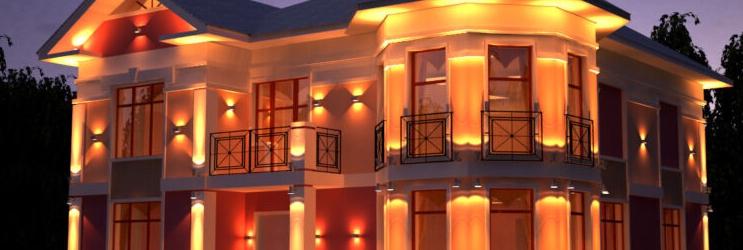
This option involves uniform lighting of all elements of the facade to create a single composition. An overall image is created of all the details highlighted by the lighting, while unattractive areas can be deliberately hidden.
LED downlights are used for lighting, which can be either overhead or recessed. This architectural lighting is suitable for classic buildings with columns and stucco.
Local lighting
This variant accentuates individual elements. A large part of the facade may be unlit. Suitable for any building, as it only illuminates what is needed, and doesn't have to bring the whole facade to perfection.
For local illumination you can use different types of luminaires. Most often these are low-power recessed or surface models, they can be hidden in niches and behind projections.
What techniques are used to enhance the effect
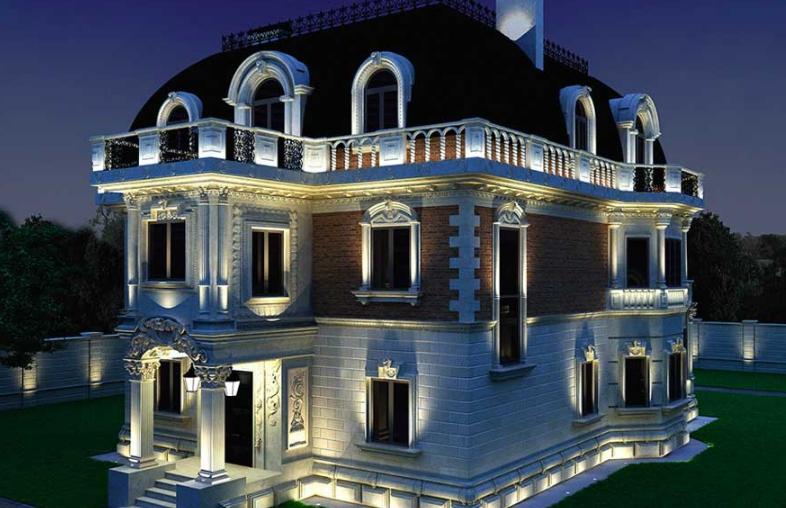
If you want to make a facade distinctive and memorable, simple guidelines are worthwhile:
- Apply dynamic lighting that is constantly changing. Shimmering with all the colors of the rainbow facades are rare and therefore attract attention.
- Use the technique of changing the brightness of the lighting. You can simply highlight individual details or change the accents from time to time.
- Combine different versions of lighting through different modes that can be turned on both manually and automatically.
You can use motion sensors so that when a person approaches, the brightness of the facade illumination increases.
What to look for when creating backlighting
To choose facade lighting, there are a number of important aspects to consider:
- The size of the building and its location. If the structure is located in a dense square or garden, the effect of lighting will not be very good because of poor visibility.
- Take into account the architecture and the features of the house. It is necessary to think immediately what elements are worth highlighting, and which are better hidden.
- Accounted for the lighting of adjacent areas. In the city need to illuminate the facade of a bright, and the country houses look great with a dimmed light.
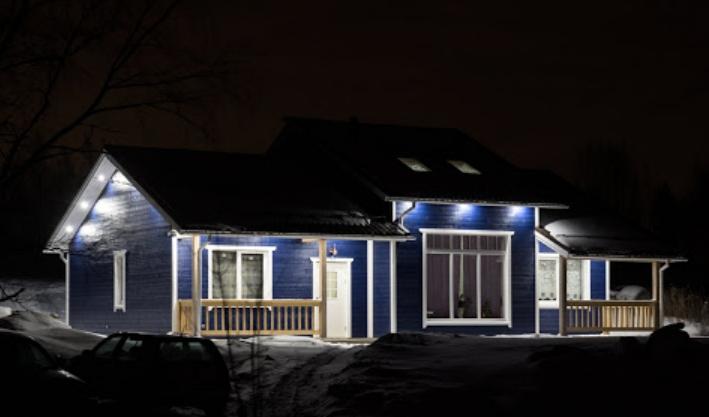
It is important to determine in advance the effect that should create backlighting. Sometimes it's much easier and smarter to highlight the contours than to flood the facade with bright light.
Stages of creating backlighting
To achieve a good result and make a quality system, you need to properly organize the work:
- Make a project of the future system. In it, designate the location and amount of equipment to be used.
- Bring the cable to the places where the lighting fixtures are connected. The easiest way is to lay under the ground.
- Install the equipment and connect it in such a way as to protect the connections from moisture.
You should always check the system to make sure everything is working properly.
From this video report, understand what modern architectural lighting should be.
Building lighting can be done by selecting the right fixtures and wiring them according to the project. It is important to determine the type of lighting in advance so that you can purchase everything you need.
